With thousands of books published each year, there’s bound to be something for everyone. Many books catch a reader’s eyes briefly, and then he/she moves on to the next one, and the next. After all, there are a lot of pages to get through and a lot of books to read. But each year, among the new releases with their tantalizing covers and book blurbs, there are always books that refuse to leave us alone, that make readers return to them and think about the issues they raised or the stories they have told. These are the books that linger with readers, prompting them to ask questions, to talk to friends about the book, or even to reread certain passages again. Sometimes challenging assumptions, these titles tickle at the back of readers’ hearts and minds and make them wonder. This week’s installment of book reviews from members of the Children’s Literature and Reading Special Interest Group focuses on books that linger with us.
Grades K-3
Brown-Wood, JaNay. (2014). Imani’s Moon. Illus. by Hazel Mitchell. Watertown, MA: Charlesbridge/A Mackinac Island Book.
 Each day Imani faces ridicule from her peers in her Maasai village because of her small size. But at night her mother’s stories and affirmations counteract those negative messages, encouraging her to dream big and reach for the stars. Despite the ridicule and doubts of others, the little girl keeps her eyes on her goals, trying different approaches to attain them. Although she fails more than once, eventually, she succeeds and receives an extraordinary gift. While some readers may be put off by the book's magical realism, it affords the story to a dream-like quality told through the voice of an experienced storyteller accustomed to weaving tales for a rapt audience. Created with watercolors and graphite and then painted digitally, the illustrations are filled with vibrant hues that enhance a playful yet somber tone. The book’s positive message is one that should be shared with youngsters who often forsake their dreams after the naysaying of others or after a failure or two. Readers will want to consider the possibilities if they don’t give up on hard tasks too quickly.
Each day Imani faces ridicule from her peers in her Maasai village because of her small size. But at night her mother’s stories and affirmations counteract those negative messages, encouraging her to dream big and reach for the stars. Despite the ridicule and doubts of others, the little girl keeps her eyes on her goals, trying different approaches to attain them. Although she fails more than once, eventually, she succeeds and receives an extraordinary gift. While some readers may be put off by the book's magical realism, it affords the story to a dream-like quality told through the voice of an experienced storyteller accustomed to weaving tales for a rapt audience. Created with watercolors and graphite and then painted digitally, the illustrations are filled with vibrant hues that enhance a playful yet somber tone. The book’s positive message is one that should be shared with youngsters who often forsake their dreams after the naysaying of others or after a failure or two. Readers will want to consider the possibilities if they don’t give up on hard tasks too quickly.
—Barbara A. Ward, Washington State University Pullman
Burton, LeVar, & Bernardo, Susan Schaefer. (2014). The Rhino Who Swallowed a Storm. Illus. by Courtenay Fletcher. Burbank, CA: Reading Rainbow.
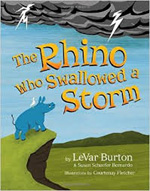 Stories, especially when shared with loved ones, often dispel anxieties and offer hope. When a storm reminds Mica Mouse of the previous year's hurricane, her father reaches for a picture book to make her feel better. In this story within a story, the book he chooses happens to describe how a rhino doesn’t know what to do with his feelings after he swallows a storm that threatens the community he loves. Eventually, with the help of several animal friends, he takes a breath, sheds a tear, and begins the slow healing process. Featuring lively illustrations filled with blues and greens and several kind-hearted, caring animals, this story with its rhythmic lines reminds readers that there is always someone willing to help even during tough times. Although it focuses on a storm, the title is ideal for sharing with youngsters dealing with an unsettling event or life crisis. To add to the book’s appeal, the family's book shelves are filled with neatly-displayed books, and Papa Mouse is reading the Gouda Times, a nice touch for teachers seeking examples of readers and the power of a book to provide reassurance during the best and worst of times.
Stories, especially when shared with loved ones, often dispel anxieties and offer hope. When a storm reminds Mica Mouse of the previous year's hurricane, her father reaches for a picture book to make her feel better. In this story within a story, the book he chooses happens to describe how a rhino doesn’t know what to do with his feelings after he swallows a storm that threatens the community he loves. Eventually, with the help of several animal friends, he takes a breath, sheds a tear, and begins the slow healing process. Featuring lively illustrations filled with blues and greens and several kind-hearted, caring animals, this story with its rhythmic lines reminds readers that there is always someone willing to help even during tough times. Although it focuses on a storm, the title is ideal for sharing with youngsters dealing with an unsettling event or life crisis. To add to the book’s appeal, the family's book shelves are filled with neatly-displayed books, and Papa Mouse is reading the Gouda Times, a nice touch for teachers seeking examples of readers and the power of a book to provide reassurance during the best and worst of times.
—Barbara A. Ward, Washington State University Pullman
Cole, Tom Clohosey. (2014). Wall. Somerville, MA: Candewick/Templar.
 Since this is the 25th anniversary of the fall of the Berlin Wall, this picture book appropriately provides a personal perspective from one young boy whose family was separated by the wall that divided the city. Worried about his father and desperate to be reunited with him, the narrator dreams about the man somehow coming to rescue his family, stuck in East Berlin. When that fails to happen, the boy takes matters into his own hands and painstakingly digs a tunnel under the wall. The boy, his mother, and his sister flee to freedom through the unexpected kindness of a soldier who lets them pass through the checkpoint and no man’s land unscathed. Capturing perfectly the period after the Berlin Wall rose, the book’s dark, emotional digital illustrations put readers in the narrator’s shoes. Although some of these events might seem dated since the Berlin Wall fell in 1989, the author makes the fear and paranoia of those times palpable here, insuring the book’s usefulness for a social studies class and a discussion of WWII’s aftermath. Readers will find themselves imagining how it must have felt to be separated from loved ones by a wall and what it would have been like to have to stand guard to prevent individuals from fleeing from East Berlin to West Berlin.
Since this is the 25th anniversary of the fall of the Berlin Wall, this picture book appropriately provides a personal perspective from one young boy whose family was separated by the wall that divided the city. Worried about his father and desperate to be reunited with him, the narrator dreams about the man somehow coming to rescue his family, stuck in East Berlin. When that fails to happen, the boy takes matters into his own hands and painstakingly digs a tunnel under the wall. The boy, his mother, and his sister flee to freedom through the unexpected kindness of a soldier who lets them pass through the checkpoint and no man’s land unscathed. Capturing perfectly the period after the Berlin Wall rose, the book’s dark, emotional digital illustrations put readers in the narrator’s shoes. Although some of these events might seem dated since the Berlin Wall fell in 1989, the author makes the fear and paranoia of those times palpable here, insuring the book’s usefulness for a social studies class and a discussion of WWII’s aftermath. Readers will find themselves imagining how it must have felt to be separated from loved ones by a wall and what it would have been like to have to stand guard to prevent individuals from fleeing from East Berlin to West Berlin.
—Barbara A. Ward, Washington State University Pullman
Graham, Bob. (2014). Vanilla Ice Cream. Somerville, MA: Candlewick Press.
 Life is full of unexpected encounters that may change lives. In this picture book, a hungry sparrow searching for food leaves a tiny truck stop in India to perch among some bags of rice on their way across the ocean. Tucked in a corner of a rice bag, the bird follows the food onto a ship and manages to survive the turbulent voyage. Upon disembarking, the sparrow has a chance encounter with Edie Irvine, a little girl who is enjoying the day with her doting grandparents. The grandparents pause to enjoy some delicious ice cream, and the sparrow drops by, causing some confusion, which results in Edie's accidental first taste of vanilla ice cream. This philosophical meditation on life’s unexpected events reminds readers that sometimes chance events have unexpected but pleasant results. The ink and watercolor illustrations are as attractive as the book's message. It’s hard to think of anything more delightful than an initial taste of ice cream flavored with vanilla. Once again, it’s the smallest things that matter.
Life is full of unexpected encounters that may change lives. In this picture book, a hungry sparrow searching for food leaves a tiny truck stop in India to perch among some bags of rice on their way across the ocean. Tucked in a corner of a rice bag, the bird follows the food onto a ship and manages to survive the turbulent voyage. Upon disembarking, the sparrow has a chance encounter with Edie Irvine, a little girl who is enjoying the day with her doting grandparents. The grandparents pause to enjoy some delicious ice cream, and the sparrow drops by, causing some confusion, which results in Edie's accidental first taste of vanilla ice cream. This philosophical meditation on life’s unexpected events reminds readers that sometimes chance events have unexpected but pleasant results. The ink and watercolor illustrations are as attractive as the book's message. It’s hard to think of anything more delightful than an initial taste of ice cream flavored with vanilla. Once again, it’s the smallest things that matter.
—Barbara A. Ward, Washington State University Pullman
Haughton, Chris. (2014). Shh! We Have a Plan. Somerville, MA: Candlewick Press.
 Although there’s usually more than one way to get what you want, the three friends in this picture book have a lot to learn about how. Accompanied by a much smaller companion with a big heart, the three of them creep through the woods at night in search of prey. The larger three carry nets—and they have a plan—to capture a bird. Time and time again, they are unsuccessful while the smallest member of the hunting party attracts a flock of birds with his friendliness, kindness, and offer of food. Of course, the others fail to learn from his example. Many young readers will enjoy the story for its humorous elements while others will nod gently, recognizing its life lessons about the impact of force versus gentleness. The repetitive use of cautionary "Shh"s hissed at the youngster as the gang tries to execute its plans and the moody digital illustrations are bound to make readers feel as though they are moving stealthily through the night.
Although there’s usually more than one way to get what you want, the three friends in this picture book have a lot to learn about how. Accompanied by a much smaller companion with a big heart, the three of them creep through the woods at night in search of prey. The larger three carry nets—and they have a plan—to capture a bird. Time and time again, they are unsuccessful while the smallest member of the hunting party attracts a flock of birds with his friendliness, kindness, and offer of food. Of course, the others fail to learn from his example. Many young readers will enjoy the story for its humorous elements while others will nod gently, recognizing its life lessons about the impact of force versus gentleness. The repetitive use of cautionary "Shh"s hissed at the youngster as the gang tries to execute its plans and the moody digital illustrations are bound to make readers feel as though they are moving stealthily through the night.
—Barbara A. Ward, Washington State University Pullman
Peet, Mal, & Graham, Elspeth. (2014). Night Sky Dragons. Illus. by Patrick Benson. Somerville, MA: Candlewick Press.
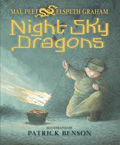 Yazul and his maternal grandfather treasure the time they spend together making kites, but the displeasure Yazul’s father expresses about his hobby often leaves the boy feeling torn. When bandits attack and lay siege to the family's compound, its inhabitants are close to dying from thirst and hunger until Yazul draws on the hobby his father has dismissed to save the day. Together with his grandfather, he crafts a daring plan to outwit the bandits with kites and explosive devices that seem dragon-like. The pen and watercolor illustrations of this book are every bit as appealing as the story itself. Readers will cheer Yazul’s bravery and creative thinking while also understanding his desire to please both his father and himself. Originally published in England, the book will make readers smile at Yazul's cleverness and how easily frightened the bandits turn out to be.
Yazul and his maternal grandfather treasure the time they spend together making kites, but the displeasure Yazul’s father expresses about his hobby often leaves the boy feeling torn. When bandits attack and lay siege to the family's compound, its inhabitants are close to dying from thirst and hunger until Yazul draws on the hobby his father has dismissed to save the day. Together with his grandfather, he crafts a daring plan to outwit the bandits with kites and explosive devices that seem dragon-like. The pen and watercolor illustrations of this book are every bit as appealing as the story itself. Readers will cheer Yazul’s bravery and creative thinking while also understanding his desire to please both his father and himself. Originally published in England, the book will make readers smile at Yazul's cleverness and how easily frightened the bandits turn out to be.
—Barbara A. Ward, Washington State University Pullman
Grades 4-6
McDonough, Yona Zeldis. (2014). Little Author in the Big Woods: A Biography of Laura Ingalls Wilder. Illus. by Jennifer Thermes. New York, NY: Henry Holt and Company.
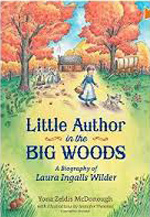 For generations, many young readers have grown up reading the books in The Little House series by Laura Ingalls Wilder. So closely do they relate to how the author describes her family's migration from one part of the country to another that many of them feel as though they know the author quite well. Those fans of the series will be delighted to discover this new Laura Ingalls Wilder biography for young readers. Filled with anecdotes from Wilder's growing up days, many of which found their way into her series, to her time as a school teacher when she was paid $20 a month to her later years when she wrote magazine articles, the book naturally covers some of the same territory as her books, a fact that only endears the book further. This biography provides just enough detail to keep readers' interest, even addressing gracefully the controversy over whether Laura or her daughter Rose actually wrote the Little House books. A writer herself, Rose had urged her mother to share the stories of her childhood with a larger audience. It's fascinating to return to a time when the country wasn't so settled and land could be had for hard work. Readers will also enjoy the adorable illustrations depicting Laura's world and the feisty personality that made others call her a wildcat as well as trying out the recipes, games, and crafts included in the back matter. Required reading for anyone who has read and loved those Little House books, this book will inspire a resurgence in interest in those books and a desire to learn even more about this incredible woman whose whole life seems to have been an adventure.
For generations, many young readers have grown up reading the books in The Little House series by Laura Ingalls Wilder. So closely do they relate to how the author describes her family's migration from one part of the country to another that many of them feel as though they know the author quite well. Those fans of the series will be delighted to discover this new Laura Ingalls Wilder biography for young readers. Filled with anecdotes from Wilder's growing up days, many of which found their way into her series, to her time as a school teacher when she was paid $20 a month to her later years when she wrote magazine articles, the book naturally covers some of the same territory as her books, a fact that only endears the book further. This biography provides just enough detail to keep readers' interest, even addressing gracefully the controversy over whether Laura or her daughter Rose actually wrote the Little House books. A writer herself, Rose had urged her mother to share the stories of her childhood with a larger audience. It's fascinating to return to a time when the country wasn't so settled and land could be had for hard work. Readers will also enjoy the adorable illustrations depicting Laura's world and the feisty personality that made others call her a wildcat as well as trying out the recipes, games, and crafts included in the back matter. Required reading for anyone who has read and loved those Little House books, this book will inspire a resurgence in interest in those books and a desire to learn even more about this incredible woman whose whole life seems to have been an adventure.
—Barbara A. Ward, Washington State University Pullman
Neri, G. (2014). Hello, I’m Johnny Cash. Illus. by A. G. Ford. Somerville, MA: Candlewick.
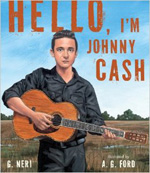 The crucible of poverty, pain, and loss sometimes can result in greatness, as it did in the case of country singer Johnny Cash. This free-verse biography sprawls across the pages, filling readers' hearts in the same way its subject once did. The full-page oil illustrations accompanying different sections in the book are a revelation themselves, showing slices of life and representing the times during which the singer grew up. Readers learn about his formative years in rural Arkansas and the importance of the church and religious songs, as well as the unexpected death of his beloved older brother. Through all the events of his early life, Cash sang. After a stint in the military and a job as a traveling salesman, Johnny caught a couple of lucky breaks, and was on his way to stardom. The author goes to great pains to show how music was the one constant in Cash's life, allowing him to express both joys and sorrows. Since the biography stops just as stardom beckons, covering his next 40 years in a few lines, readers may be curious to find out more about where his music led him. Back matter includes additional information about this great singer, the historical events through which he lived, and a list of music to explore, and it would have been marvelous to have a CD and a photograph of the real Man in Black. It's no easy feat to capture someone as iconic as Cash, but this book does so wonderfully while also setting his story within the appropriate context of the historical events swirling around him.
The crucible of poverty, pain, and loss sometimes can result in greatness, as it did in the case of country singer Johnny Cash. This free-verse biography sprawls across the pages, filling readers' hearts in the same way its subject once did. The full-page oil illustrations accompanying different sections in the book are a revelation themselves, showing slices of life and representing the times during which the singer grew up. Readers learn about his formative years in rural Arkansas and the importance of the church and religious songs, as well as the unexpected death of his beloved older brother. Through all the events of his early life, Cash sang. After a stint in the military and a job as a traveling salesman, Johnny caught a couple of lucky breaks, and was on his way to stardom. The author goes to great pains to show how music was the one constant in Cash's life, allowing him to express both joys and sorrows. Since the biography stops just as stardom beckons, covering his next 40 years in a few lines, readers may be curious to find out more about where his music led him. Back matter includes additional information about this great singer, the historical events through which he lived, and a list of music to explore, and it would have been marvelous to have a CD and a photograph of the real Man in Black. It's no easy feat to capture someone as iconic as Cash, but this book does so wonderfully while also setting his story within the appropriate context of the historical events swirling around him.
—Barbara A. Ward, Washington State University Pullman
Smith, David J. (2014). If… A Mind-Bending New Way of Looking at Big Ideas and Numbers. Illus. by Steve Adams. Toronto, ON: Kids Can Press.
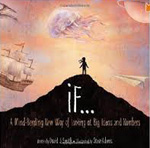 Fans of this author’s earlier titles, If the World Were a Village (Kids Can Press, 2002) and If America Were a Village (Kids Can Press, 2009) will enjoy this new outing in which he looks at ideas and numbers. In engaging fashion, he manages to take big numbers and concepts and condense them to be easily understood. By using objects with which readers are familiar, he simplifies complicated concepts and makes them accessible. Filled with handsome illustrations, this picture book takes a look at the size of the planets and the galaxy in which we live and then uses various types of balls to represent the size of the planets as well as their location in the solar system. He relies on the 12 months of the year to illustrate the Earth's history and a watch to show how long life has existed on Earth. Interestingly, modern humans barely take up five seconds on a wristwatch, putting our importance in perspective. The book covers the consumption of water and energy, but one of the most intriguing illustrations concerns the world's wealth. Astoundingly, 40 percent of the world's wealth is in the hands of only 1 percent of its population. Youngsters will love the last page using pizza slices to depict how we spend the days of our lives. Perhaps not surprisingly, a lot of our time is spent in bed. If only we could stop sleeping, just think how more productive we might be.
Fans of this author’s earlier titles, If the World Were a Village (Kids Can Press, 2002) and If America Were a Village (Kids Can Press, 2009) will enjoy this new outing in which he looks at ideas and numbers. In engaging fashion, he manages to take big numbers and concepts and condense them to be easily understood. By using objects with which readers are familiar, he simplifies complicated concepts and makes them accessible. Filled with handsome illustrations, this picture book takes a look at the size of the planets and the galaxy in which we live and then uses various types of balls to represent the size of the planets as well as their location in the solar system. He relies on the 12 months of the year to illustrate the Earth's history and a watch to show how long life has existed on Earth. Interestingly, modern humans barely take up five seconds on a wristwatch, putting our importance in perspective. The book covers the consumption of water and energy, but one of the most intriguing illustrations concerns the world's wealth. Astoundingly, 40 percent of the world's wealth is in the hands of only 1 percent of its population. Youngsters will love the last page using pizza slices to depict how we spend the days of our lives. Perhaps not surprisingly, a lot of our time is spent in bed. If only we could stop sleeping, just think how more productive we might be.
—Barbara A. Ward, Washington State University Pullman
Grades 7-8
Brahmachari, Sita. (2014). Jasmine Skies. Park Ridge, IL:Albert Whitman & Company.
 In this sequel to Mira in the Present Tense (Albert Whitman & Company, 2013), 14-year-old Mira Levinson visits India for the first time. Despite missing her longtime boyfriend Jide, she cannot wait to embrace the culture from her mother's side of the family and figure out why her aunt and her mother have been estranged. While her cousin Priya rehearses for a dance performance, Mira savors Kolkata's sights, sounds, and tastes, slowly finding that the city’s annoying heat, crowded streets, and traffic jams are offset by its charms. Against her will, she is drawn to Janu, her aunt’s protégé and one of the individuals in charge of a refuge established by her aunt. As she soaks in the history and culture of her temporary home, Mira realizes that many of her feelings are changing and some of those changes may result in heartbreak. The writing and character depiction are strong, painting Mira as impulsive and drawn to quick fixes for the nation's poverty and impulsive, extravagant gestures such as giving away her charm bracelet to a poor girl on a train. Once the roots of the estrangement between her aunt and her mother are uncovered, readers will wonder about how what seems to be an act of kindness can turn out to be an act of cruelty.
In this sequel to Mira in the Present Tense (Albert Whitman & Company, 2013), 14-year-old Mira Levinson visits India for the first time. Despite missing her longtime boyfriend Jide, she cannot wait to embrace the culture from her mother's side of the family and figure out why her aunt and her mother have been estranged. While her cousin Priya rehearses for a dance performance, Mira savors Kolkata's sights, sounds, and tastes, slowly finding that the city’s annoying heat, crowded streets, and traffic jams are offset by its charms. Against her will, she is drawn to Janu, her aunt’s protégé and one of the individuals in charge of a refuge established by her aunt. As she soaks in the history and culture of her temporary home, Mira realizes that many of her feelings are changing and some of those changes may result in heartbreak. The writing and character depiction are strong, painting Mira as impulsive and drawn to quick fixes for the nation's poverty and impulsive, extravagant gestures such as giving away her charm bracelet to a poor girl on a train. Once the roots of the estrangement between her aunt and her mother are uncovered, readers will wonder about how what seems to be an act of kindness can turn out to be an act of cruelty.
—Barbara A. Ward, Washington State University Pullman
deFombelle, Timothee. (2014). Vango: Between Sky and Earth. Somerville, MA: Candlewick.
 The hero of this book, Vango, has long lived a life filled with mystery and secrets. Even his roots and how he came to the isolated island where he grew up are veiled in mystery. On the day he is to join the priesthood, he is accused of killing one of his benefactors and must flee the country. From there, he heads to various locations, barely one step ahead of those who seem to be determined to kill him. Although there are those who would describe him as paranoid, in Vango’s eyes his subterfuge is grounded in the surety his life is in danger. Readers will love being hurled from one place to another, sometimes atop a zeppelin as it flies through the air, sometimes racing by foot. The book’s fast pace, interesting characters whose loyalty to Vango is unshakeable, and its complicated plot that unfolds slowly and intriguingly, combine to make this a page-turner. Readers will be haunted by Vango and the events in his life when the book concludes. It’s hard to decide whether he is incredibly lucky or incredibly cursed.
The hero of this book, Vango, has long lived a life filled with mystery and secrets. Even his roots and how he came to the isolated island where he grew up are veiled in mystery. On the day he is to join the priesthood, he is accused of killing one of his benefactors and must flee the country. From there, he heads to various locations, barely one step ahead of those who seem to be determined to kill him. Although there are those who would describe him as paranoid, in Vango’s eyes his subterfuge is grounded in the surety his life is in danger. Readers will love being hurled from one place to another, sometimes atop a zeppelin as it flies through the air, sometimes racing by foot. The book’s fast pace, interesting characters whose loyalty to Vango is unshakeable, and its complicated plot that unfolds slowly and intriguingly, combine to make this a page-turner. Readers will be haunted by Vango and the events in his life when the book concludes. It’s hard to decide whether he is incredibly lucky or incredibly cursed.
—Barbara A. Ward, Washington State University Pullman
Jonsberg, Barry. (2014). The Categorical Universe of Candice Phee. San Francisco, CA: Chronicle Books.
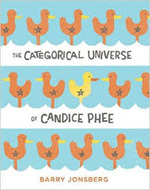 Twelve-year-old Candice Phee epitomizes the word "quirky" in her approach to life. Somehow, she manages to think the best of everyone, even Jen Marshall, a classmate who enjoys belittling her. Life has handed Candice a lot of lemons: Her younger sister died when she was still an infant, her mother suffers from debilitating depression, and her father and uncle aren't speaking due to a long-standing rivalry over a computer programming issue. But Candice isn't one to leave well enough alone. She figures she needs to make things right, and while the way she goes about doing this is certainly unorthodox—for instance, nearly drowning so her father and uncle can work together to save her—her intentions are good. The passages in which she ponders life's meaning and how her fish regards her as a godlike figure show her philosophical nature while those in which she shares her version of truth are hilarious yet poignant. She’s honest to a fault, even suggesting her teacher, Miss Bamford, wear a pirate's patch to hide her lazy eye. While the book is filled with humor, it also contains nuggets of truths about human nature. Although it's been done before (in Totally Joe, Howe, 2005 and The Encyclopedia of Me, Rivers, 2012), the structure of chapters starting with letters of the alphabet works quite well here, allowing the narrator to veer off in many different directions. By the time readers reach the book's conclusion, they may be emotionally wrung out but also somehow enriched for the time they’ve spent with Candice.
Twelve-year-old Candice Phee epitomizes the word "quirky" in her approach to life. Somehow, she manages to think the best of everyone, even Jen Marshall, a classmate who enjoys belittling her. Life has handed Candice a lot of lemons: Her younger sister died when she was still an infant, her mother suffers from debilitating depression, and her father and uncle aren't speaking due to a long-standing rivalry over a computer programming issue. But Candice isn't one to leave well enough alone. She figures she needs to make things right, and while the way she goes about doing this is certainly unorthodox—for instance, nearly drowning so her father and uncle can work together to save her—her intentions are good. The passages in which she ponders life's meaning and how her fish regards her as a godlike figure show her philosophical nature while those in which she shares her version of truth are hilarious yet poignant. She’s honest to a fault, even suggesting her teacher, Miss Bamford, wear a pirate's patch to hide her lazy eye. While the book is filled with humor, it also contains nuggets of truths about human nature. Although it's been done before (in Totally Joe, Howe, 2005 and The Encyclopedia of Me, Rivers, 2012), the structure of chapters starting with letters of the alphabet works quite well here, allowing the narrator to veer off in many different directions. By the time readers reach the book's conclusion, they may be emotionally wrung out but also somehow enriched for the time they’ve spent with Candice.
—Barbara A. Ward, Washington State University Pullman
Pinkney, Andrea Davis. (2014). The Red Pencil. Illus. by Shane W. Evans. New York, NY: Little, Brown and Company.
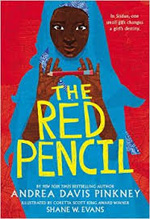 In this novel-in-verse set in Darfur, readers learn about how an unexpected conflict can change someone’s life forever. Twelve-year-old Amira enjoys her peaceful days taking care of her sheep and longing for the chance to go to school. Her mother’s traditional notions about the roles of women mean education is only a dream for Amira. When the Janjaweed attack Amira’s village, she loses just about everything, including her father and her sheep. Old Anwar, a kind elderly neighbor, helps the girl, her mother, and her sister find refuge in Kalma. So traumatized is Amira that the once ebullient girl loses her voice and with it much of her hope. When an aid worker gives her and some of the other children paper and pencils—in her case, a red pencil—she once again finds her artistic and spoken voice. The passages in which Old Anwar teaches Amira the letters of the alphabet are particularly compelling:
In this novel-in-verse set in Darfur, readers learn about how an unexpected conflict can change someone’s life forever. Twelve-year-old Amira enjoys her peaceful days taking care of her sheep and longing for the chance to go to school. Her mother’s traditional notions about the roles of women mean education is only a dream for Amira. When the Janjaweed attack Amira’s village, she loses just about everything, including her father and her sheep. Old Anwar, a kind elderly neighbor, helps the girl, her mother, and her sister find refuge in Kalma. So traumatized is Amira that the once ebullient girl loses her voice and with it much of her hope. When an aid worker gives her and some of the other children paper and pencils—in her case, a red pencil—she once again finds her artistic and spoken voice. The passages in which Old Anwar teaches Amira the letters of the alphabet are particularly compelling:
He shows me / that in the English alphabet / his name and mine / begin the same—with an A.// 'Now you,' he encourages, / watching the soil / as I slice its surface / to form the English alphabet symbol / that starts my name. // It's a strong, handsome character, / this English-alphabet A. // My finger strikes two lean, / angled lines, / pressed / forehead to forehead / and holding hands. // I make this A / with my own special stroke" // My A / has big feet / that walk forward on the sand. // My A / moves ahead / on strong, flat sandals. // My A / marches past anything / that dares to block it. // Old Amwar purses his crinkled lips / into a smile that can only mean / satisfaction. // 'Your hand already understands / that writing letters / and drawing are the same,' he says. / 'Letters are pictures that make words.' // I see what Old Anwar means. // My A / lets me feel the truth / of what he's saying. // But still, to be certain, I ask, / 'That is all there is to it?' // Old Anwar's nod / shows me: / Yes!
Together, the text and the illustrations remind readers how much the simple gift of a writing utensil and the power of literacy can change one girl's future.
—Barbara A. Ward, Washington State University Pullman
Wilson, Janet. (2014). Severn and the Day She Silenced the World. Toronto, ON: Second Story Press.
 This title is perfect for sharing with jaded middle graders who no longer think they can make a difference in the world and feel powerless. The book largely focuses on how a 12-year-old Canadian, Severn Cullis-Suzuki, managed to take her concerns about social justice and the environment to a world stage through the help of friends, family, and donors. Severn had fallen in love with the Amazon rainforests during a visit there, and she was horrified when she noted their destruction. After returning home to Canada, she persuaded her friends to join her in raising money for her cause and later to support her travel to the Earth Summit in Brazil in 1992. The friends formed the Environmental Children's Organization (ECO), and gave speeches at the conference. Incredibly, the adults at the conference actually listened to Severn's speech, which was taped, and later shared on YouTube. Her honesty and directness in calling the adults of the world to account for their actions or inactions on the environment and poverty brought many adults in the audience to tears. Perhaps as a blueprint to follow in Severn’s footsteps, the author included the details that went into Severn and ECO's campaign, providing an inspiring example of someone taking action for her beliefs rather than just talking about it. With plenty of photographs of Severn and her friends during their awareness campaign, this book might make a lot of readers feel guilty for doing nothing to change the world around them.
This title is perfect for sharing with jaded middle graders who no longer think they can make a difference in the world and feel powerless. The book largely focuses on how a 12-year-old Canadian, Severn Cullis-Suzuki, managed to take her concerns about social justice and the environment to a world stage through the help of friends, family, and donors. Severn had fallen in love with the Amazon rainforests during a visit there, and she was horrified when she noted their destruction. After returning home to Canada, she persuaded her friends to join her in raising money for her cause and later to support her travel to the Earth Summit in Brazil in 1992. The friends formed the Environmental Children's Organization (ECO), and gave speeches at the conference. Incredibly, the adults at the conference actually listened to Severn's speech, which was taped, and later shared on YouTube. Her honesty and directness in calling the adults of the world to account for their actions or inactions on the environment and poverty brought many adults in the audience to tears. Perhaps as a blueprint to follow in Severn’s footsteps, the author included the details that went into Severn and ECO's campaign, providing an inspiring example of someone taking action for her beliefs rather than just talking about it. With plenty of photographs of Severn and her friends during their awareness campaign, this book might make a lot of readers feel guilty for doing nothing to change the world around them.
—Barbara A. Ward, Washington State University Pullman
Grades 9-12
Brody, Jessica. (2014). Unremembered: Unforgotten. New York, NY: Farrar, Straus and Giroux.
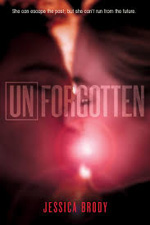 In this follow-up to Unremembered (Square Fish, 2014), Sera and Zen have traveled back in time to 1609 to evade Sera’s creators, the scientists from Diotech who want her back. Although there are those in her new home who suspect her of something sinister because she is so different, the two manage to hide safely away until her boyfriend’s illness and a near-tragedy force Sera to take action that brings her to the attention of her hunters. After the near-death experience of being burned at the stake for witchcraft, Sera races through time to find Cody who just might have the cure for what's ailing Zen. As the betrayals mount and Sera turns to one person after another for help, it's clear she will never be safe and that she can never truly be free from her creators. Teen readers will enjoy this sophisticated and complicated romance with twist after twist and fast-paced action as well as Sera's unexpected attraction to her soul mate Kaelen, who truly is irresistible because he’s been made for her. It’s hard to know what lies ahead for Sera, but readers will surely be rooting for a reunion with Zen.
In this follow-up to Unremembered (Square Fish, 2014), Sera and Zen have traveled back in time to 1609 to evade Sera’s creators, the scientists from Diotech who want her back. Although there are those in her new home who suspect her of something sinister because she is so different, the two manage to hide safely away until her boyfriend’s illness and a near-tragedy force Sera to take action that brings her to the attention of her hunters. After the near-death experience of being burned at the stake for witchcraft, Sera races through time to find Cody who just might have the cure for what's ailing Zen. As the betrayals mount and Sera turns to one person after another for help, it's clear she will never be safe and that she can never truly be free from her creators. Teen readers will enjoy this sophisticated and complicated romance with twist after twist and fast-paced action as well as Sera's unexpected attraction to her soul mate Kaelen, who truly is irresistible because he’s been made for her. It’s hard to know what lies ahead for Sera, but readers will surely be rooting for a reunion with Zen.
—Barbara A. Ward, Washington State University Pullman
Duffy, Chris (Ed.). (2014). Above the Dreamless Dead: World War I in Poetry and Comics. New York, NY: Roaring Brook Press/First Second.
 Containing 28 poems or poetic writings from the Trench Poets who fought during WWI, this book is the perfect place to start learning more about the war through these verses from the midst of conflict. Although many of the lines describe death and the horrors of war that were unique to this war, known as the Great War, many of the sentiments are universal and applicable to today's modern conflicts. The book is divided into three sections—The Call to War, In the Trenches, and The Aftermath—and there are writings in each section that will gnaw at readers' hearts and make them rethink their stance on war and peace. One of the most powerfully pieces is Siegfried Sassoon's "Repression of War Expression," which describes eloquently the post-traumatic stress disorder experienced by soldiers long after they had left those trenches where shells bombarded them day and night. Pairing the writings with comics allows each artist to offer his/her own interpretation to the lines, adding another level of intensity to the memorable, heart-rending poems, filled as they are with despair, fear, regret, and loss. This book may make readers rethink the wages of war and shed some light on how this one war was fought.
Containing 28 poems or poetic writings from the Trench Poets who fought during WWI, this book is the perfect place to start learning more about the war through these verses from the midst of conflict. Although many of the lines describe death and the horrors of war that were unique to this war, known as the Great War, many of the sentiments are universal and applicable to today's modern conflicts. The book is divided into three sections—The Call to War, In the Trenches, and The Aftermath—and there are writings in each section that will gnaw at readers' hearts and make them rethink their stance on war and peace. One of the most powerfully pieces is Siegfried Sassoon's "Repression of War Expression," which describes eloquently the post-traumatic stress disorder experienced by soldiers long after they had left those trenches where shells bombarded them day and night. Pairing the writings with comics allows each artist to offer his/her own interpretation to the lines, adding another level of intensity to the memorable, heart-rending poems, filled as they are with despair, fear, regret, and loss. This book may make readers rethink the wages of war and shed some light on how this one war was fought.
—Barbara A. Ward, Washington State University Pullman
Laidlaw, S. J. (2014). The Voice Inside My Head. Toronto, ON: Tundra Books.
 In search of his older sister Pat who has been working at a marine center on Utila, a small island off the coast of Honduras, 17-year-old Luke is sure that she is not dead. After all, he still hears her voice, which guides him as he searches for her and tries to make sense of her last days. Their closeness stems from being raised in a family where they protected each other from their mother's alcoholism and their father's inability to cope with much other than his wife's problems. As the story twists and turns, Luke starts to wonder if he ever really knew his sister since the woman the others describe isn't the one he knew. While he called her Pat, she seems to have become Tricia on the island. The ending will probably surprise readers, who will also enjoy reading the passages in which Luke struggles with his own fears of the water and what might lie beneath it and his concerns about the ferocity of whale sharks. Ultimately, the story has a great deal to do with finding oneself and avoiding assumptions about others. The writing shows confidence and affection for the flawed characters, intriguing individuals with whom readers would want to spend more time. Like Luke, readers will realize that sometimes the truth is easy to see but hard to accept.
In search of his older sister Pat who has been working at a marine center on Utila, a small island off the coast of Honduras, 17-year-old Luke is sure that she is not dead. After all, he still hears her voice, which guides him as he searches for her and tries to make sense of her last days. Their closeness stems from being raised in a family where they protected each other from their mother's alcoholism and their father's inability to cope with much other than his wife's problems. As the story twists and turns, Luke starts to wonder if he ever really knew his sister since the woman the others describe isn't the one he knew. While he called her Pat, she seems to have become Tricia on the island. The ending will probably surprise readers, who will also enjoy reading the passages in which Luke struggles with his own fears of the water and what might lie beneath it and his concerns about the ferocity of whale sharks. Ultimately, the story has a great deal to do with finding oneself and avoiding assumptions about others. The writing shows confidence and affection for the flawed characters, intriguing individuals with whom readers would want to spend more time. Like Luke, readers will realize that sometimes the truth is easy to see but hard to accept.
—Barbara A. Ward, Washington State University Pullman
Salisbury, Graham. (2014). Hunt for the Bamboo Rat. New York, NY: Random House/Wendy Lamb Books.
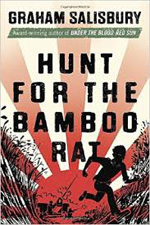 In this riveting historical fiction story based on the true experiences of Richard Sakakida, Zenji Watanabe enlists in the army in the summer of 1942. He is immediately assigned to spy on the Japanese in the Philippines due to his affinity for languages. The story begins in the Hawaiian Islands, and from the beginning, it is clear Zenji is kind-hearted and good-natured. What isn't so clear is just how brave he will turn out to be. Eventually, as the Japanese military overruns Manila, Zenji faces extraordinary danger because the Japanese will surely kill him if they catch him. When he is finally captured, his captors torture him cruelly, burning him with cigarette tips and almost drowning him with water. Somehow, through it all, he never confesses to being a spy for the U. S. Army. Readers will be horrified by the treatment of prisoners and riveted by this account of survival against incredible odds. There is hardly a dull moment in the book, even when Zenji concocts an escape plan. Powerful and moving in its own right, this is an excellent addition to the author's Prisoners of the Empire series. It is highly recommend for those who love survival stories and anyone interested in another perspective on WWII.
In this riveting historical fiction story based on the true experiences of Richard Sakakida, Zenji Watanabe enlists in the army in the summer of 1942. He is immediately assigned to spy on the Japanese in the Philippines due to his affinity for languages. The story begins in the Hawaiian Islands, and from the beginning, it is clear Zenji is kind-hearted and good-natured. What isn't so clear is just how brave he will turn out to be. Eventually, as the Japanese military overruns Manila, Zenji faces extraordinary danger because the Japanese will surely kill him if they catch him. When he is finally captured, his captors torture him cruelly, burning him with cigarette tips and almost drowning him with water. Somehow, through it all, he never confesses to being a spy for the U. S. Army. Readers will be horrified by the treatment of prisoners and riveted by this account of survival against incredible odds. There is hardly a dull moment in the book, even when Zenji concocts an escape plan. Powerful and moving in its own right, this is an excellent addition to the author's Prisoners of the Empire series. It is highly recommend for those who love survival stories and anyone interested in another perspective on WWII.
—Barbara A. Ward, Washington State University Pullman
These reviews are submitted by members of the International Reading Association's Children's Literature and Reading Special Interest Group (CL/R SIG) and are published weekly on Reading Today Online.